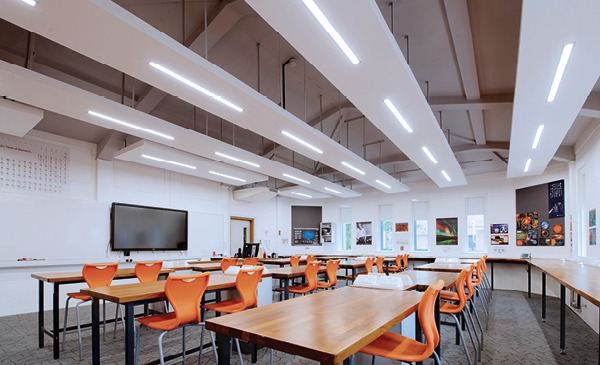
The Impact of 'Spec-Breaking' on Wellbeing
Spec-breaking: The importance of quality over price
“Buy Cheap, Buy Twice” is an attitude echoed throughout the construction industry, so it pays to provide solutions that focus on quality rather than cutting costs.
To this end, there have been a number of initiatives to try and minimise the prevalence of “spec-breaking”, as project design teams look for the cheapest alternative to their needs, rather than using products that will provide the expected benefits.
One such initiative is the Building in Quality (BIQ) Quality Tracker, developed by RIBA (Royal Institute of British Architects). This picks up on the construction industry’s many efforts to improve quality in buildings in the wake of several high-profile events, not least the Grenfell Tower fire. It resonates particularly strongly with what Dame Judith Hackitt described in her Independent Review of Building Regulations and Fire Safety: Final Report as the ‘golden thread’ of information from concept to finished building and beyond.
This is particularly key for lighting designers and specifiers. Lighting upgrades are often required for specific reasons, whether it’s improved energy efficiency, better quality of illumination or more control of the lighting.
If an upgrade is carried out using cheaper luminaires that do not fully match up to the original specification, then end-users may find themselves no better off than they were initially.
Spec-breaking can reduce light quality
When specifying a new lighting system, switching to LED isn’t enough. This is a common pitfall when choosing luminaires for a lighting upgrade. While LED fittings do indeed tend to be more energy efficient than fluorescent alternatives, cheaper LED luminaires may not offer the longevity or improved illumination that comes with higher quality luminaires.
A common complaint with cheaper luminaires is a lack of glare control. Discomfort glare can be a major problem for people trying to focus, particularly in offices or education environments.
Luminaires that cause reflection off desks or computers can cause serious problems for workers and students, highlighting the need for luminaires fitted with specialised diffusers or beam angles to reduce the prevalence of glare.

This can be pivotal from a specification perspective, as lighting designs may be put together based on certain luminaires being installed. If a specification required certain spacings between luminaires in order to achieve a higher UGR rating, and cheaper fittings are used instead, then this may lead to dark patches throughout the room.
An uneven light distribution can lead to eye strain and discomfort, which can cause headaches and affect people’s wellbeing. As wellbeing is becoming increasingly significant for business owners and facility managers, a lighting system supplied to full specification can have considerable benefits for end-users in terms of productivity, employee performance and reduced absenteeism.
The Impact of Low-Quality Lighting on Wellbeing
There has been a lot of recent research into employee productivity and wellbeing, and there is no denying the logic that happier, healthier and more comfortable employees are going to be more productive, and the notion of fashioning workplaces that are conducive to good health is certainly not a new one.
The role of lighting in enhancing wellbeing in the workplace cannot be understated. The circadian rhythm is the natural daily cycle that helps humans wake up in the morning and fall asleep at night. Naturally humans are exposed to bluer light in the morning to midday, followed by warmer colour temperatures in the afternoon and evening.
Artificial lighting in workplaces that replicate this can make people feel more in tune with their natural rhythms, and in turn will enhance their wellbeing and boost productivity and focus. Higher specification luminaires can achieve this through tunable white lighting. Hence, lighting designs that require tunable lighting must be wary of “spec-breaking”, as cheaper fittings may not be able to replicate natural colour changes.
Furthermore, factors such as flicker and glare are more prevalent with poor quality luminaires, and these can seriously impair the wellbeing of employees.
The Importance of Wellbeing
The considerable benefits of wellbeing for business owners, as well as end-users, cannot be ignored. 1 in 6 workers feel that their workplace is having a diminishing effect on their wellbeing (British Council of Offices), so the value for employers in terms of staff retention and happiness is clear.
Furthermore, the World Green Building Council found that an improved lighting design can lead to a 23% increase in productivity, highlighting the link between lighting and improved employee performance for businesses. A number of studies also suggest that concentration, focus and learning retention in schools, colleges and universities are all linked to light.
The problems, then, of “spec-breaking” when installing a lighting system can be significant. If cheap alternatives to modern, high quality luminaires are specified, then substantial benefits may be missed in terms of worker wellbeing and retention.
Highlighting the benefits of lighting for wellbeing to customers can not only discourage cheaper alternatives from being used, but may also increase the likelihood of a one-phase project becoming a multi-phase scheme, which can provide significant, long-term benefits for contractors.